In 1751, the King of Naples Charles of Bourbon commissioned a palace that could hold a candle to the French Versailles. Just like the latter, the Italian ambitious building was designed to be built in a strategic position. Caserta plains were 20 km from the capital city, so it seemed the most suitable place to build a majestic structure. If located in Naples, it would have been challenging to defend it from the sea.
Thus, the brilliant Neapolitan architect Luigi Vanvitelli projected the largest royal residence in the world. With its 47,000 sqm in length, the Royal Palace of Caserta challenged its French forerunner impressiveness.
Unfortunately, Vanvitelli never saw his work finished since he died in 1773. However, his son Carlo continued and completed his work. After almost one hundred years, the stunning Royal Palace construction finished in 1845.
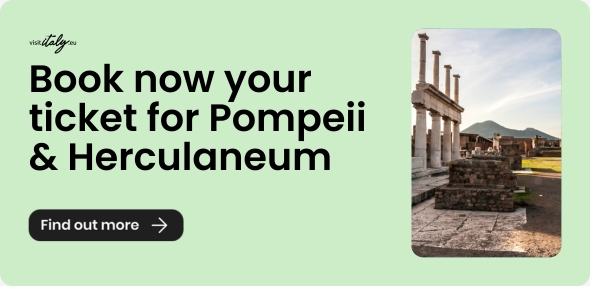
A symbol of Italian Baroque
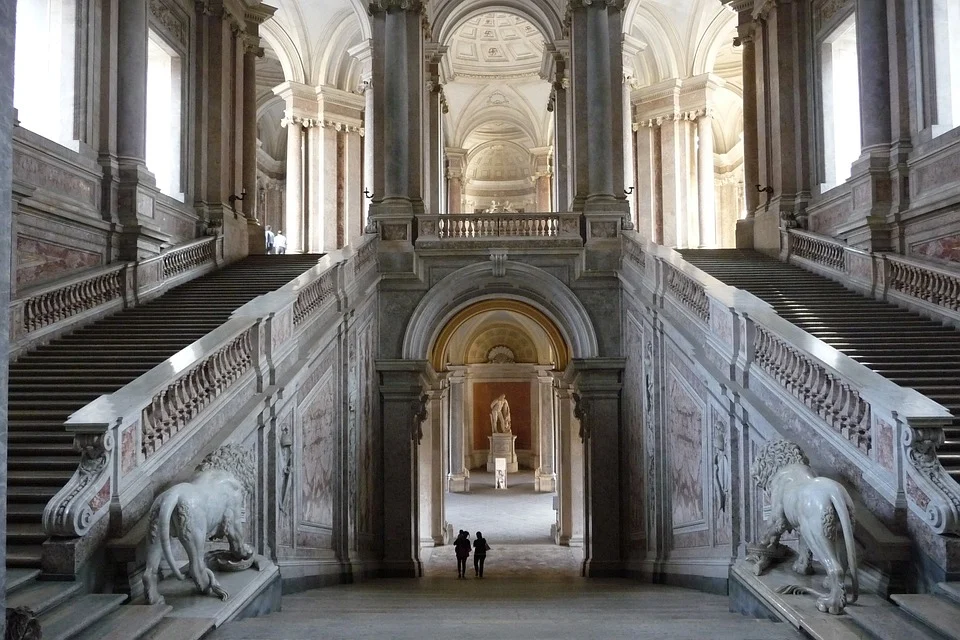
The Royal Palace of Caserta was declared a UNESCO World Heritage Site in 1997, and it also gained special autonomy from the Ministry of Cultural Heritage and Activities in 2016.
The Italian Versailles is a monumental complex. The Royal Palace rises for five floors, reaching a height of 36 m. A central dome tops the whole structure. It counts 1200 rooms and 34 staircases in its internal spaces.
Opulent ornaments embellish the rooms such as bas-reliefs, frescoes and sculptures. The Throne Room is the largest apartment in the palace and was used to receive the most eminent guests and organize lavish Court Ball.
The external paths are mindblowing as well. The "staircase of honour" leaves the visitor breathless.
Two majestic marble lions flank the stairs, at the bottom of which the three statues of the Royal Majesty, Virtue and Truth stand. Two other large side stairs accompany the visitor to a height of 37 meters. From here, the vision takes a whole new perspective for the visitor to admire the building grandeur. At the time, the architectural work had been considered such majestic as to inspire the following world staircases constructions.
A noteworthy dome tops the stairs. An unprecedented constructive audacity project gave birth to a half-hidden central oculus in its interior space, where an invisible orchestra played every time the king ascended the stairs. Moreover, a marvellous painting of Gerolamo Starace depicting "The Palace of Apollo" decorates the whole structure.
This area connects the lower and upper vestibules, from where the visitor can access the royal apartments and the palatine chapel.
The Upper Vestibule looks like a temple. It is almost as one with the staircase. Indeed, no spaces are separating the two zones. It has got an octagonal structure rich in ornaments and spectacular marble constructions.
The Palatine Chapel, the Art Gallery, the Library and the Court Theatre
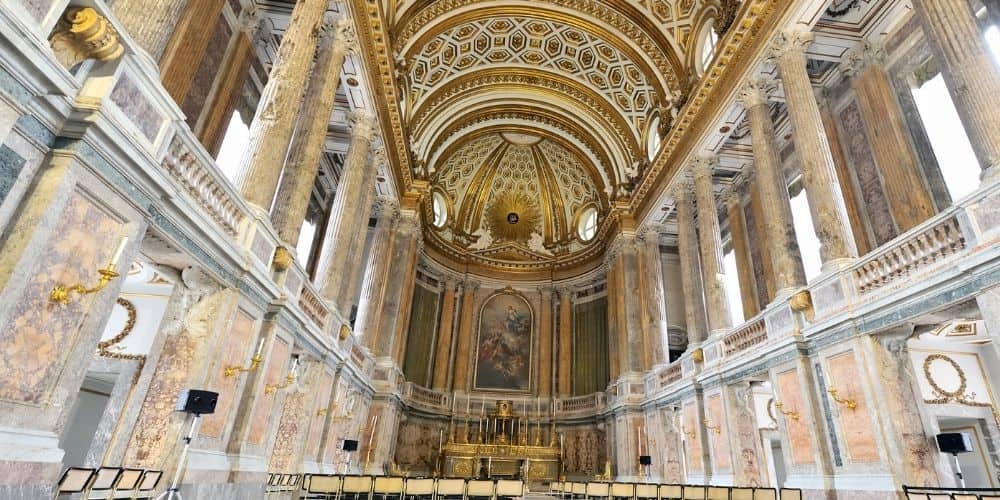
Vanvitelli designed the Palatine Chapel in every single. The structure locates next to the Royal Apartments entrance. It is perhaps the setting that most presents an analogy with the Versailles model. The Palatine Chapel consists of a single nave flanked by two side passages leading to the Museum of Sacred Furnishings, where valuable artefacts and sacred paintings are kept. During World War II, the chapel was bombed and severely damaged. Despite considerable restoration work, many beauties got lost.
The Art Gallery sets up to accommodate and show several paintings that document the royal family's cultural and artistic choices. The first rooms are dedicated to the "Fasti Farnesiani" paintings, which the Bourbon family received from the Farnese collection. The visitor can find several Bourbons family portrays depicting the Bourbons of Naples and their relations with the Bourbons of Spain and France in the onward rooms. The last room is dedicated to still lifes and landscapes paintings.
Along the eastern side of the Royal Palace, the enchanting Palatine Library commissioned by Queen Maria Carolina of Habsburg-Lorraine locates. She was King Ferdinand IV of Bourbon's wife and a woman of great culture. Finely decorated with frescoes depicting the zodiac signs and constellations, the Library is composed of two antechambers and three rooms hosting an assorted collection of ancient books. Among its fourteen thousand volumes, the Declaration of the Drawings of the Royal Palace of Caserta by Luigi Vanvitelli is kept. The visitor can also find many scientific-interest objects in the room's centre, such as the telescope, barometers and globes. The third room of the Library leads to the Elliptical Room, where the Bourbon crib is exhibited. Presumably, this royal family's passion paved the way for the renewed Neapolitan affection for the Nativity scene.
The Royal Palace western area hides an accurate Neapolitan San Carlo Theatre's reproduction. The Palace work had already begun when the architect designed the theatre project. The Court Theatre was for the exclusive use of the royal family. The shape is a classic horseshoe, surrounded by five orders of boxes. The project uniqueness lies in having equipped the stage with a portal that overlooks the park, creating suggestive natural scenery.
The Park, the Aqueduct and the San Leucio complex
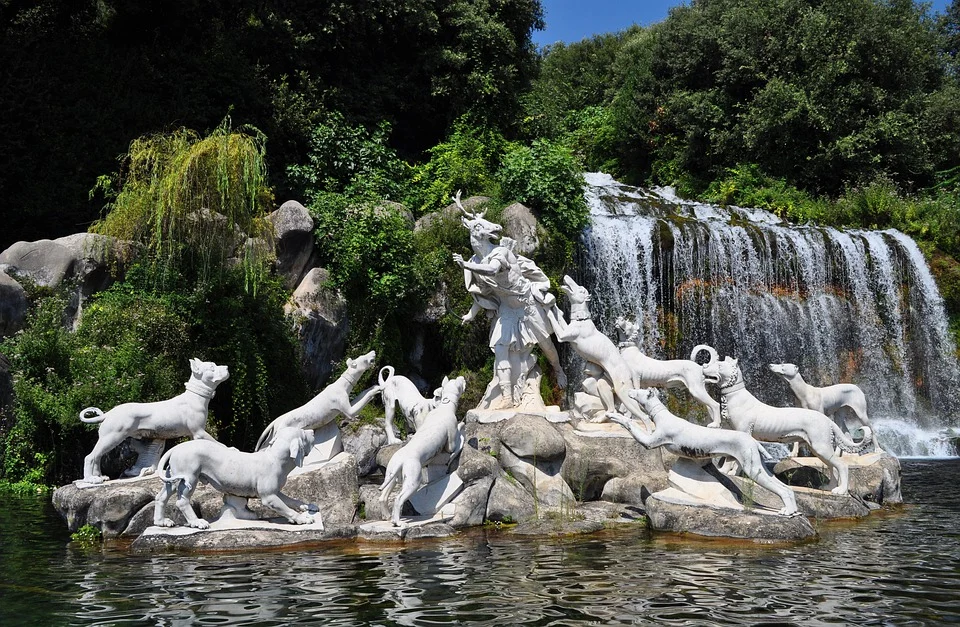
The park is a typical example of the XVIII century Italian garden. It was a part of the original project presented by Vanvitelli.
It is composed of vast lawns, square flowerbeds and massive fountains that feature stunning water games.
Immense pools of water, waterfalls and fountains form a wide central axis flanked by sculptural groups and a grassy lawn. An impressive waterfall surrounded by groves arranged to create a natural setting sits at the end of the axis. The visual effect is extraordinary.
The park extends up to the top of the hill rising in front of the palace. From here, the visitor can access an almost-fairytale garden. Strongly desired by Queen Maria Carolina of Austria, Queen Maria Carolina of Austria, the so-called English Garden hosts a conspicuous exotic botanical variety that frames an enjoyable walk.
The Queen also commissioned the Bath of Venus, an enchanted place where the goddess of beauty's statue houses. Various species of plants and a small temple frame the astonishing oasis.
The ambitious project combining the palace and the park required a conspicuous water supply. For this reason, King Charles of Bourbon commissioned a prodigious hydraulic engineering work. Therefore, Vanvitelli designed an aqueduct to ensure the necessary water supply for the new residence, the park and the fountains. With its 38 km in length, the Aqueduct has been included - together with the Royal Palace itself - in the UNESCO World Heritage List. It is still considered one of the most remarkable works commissioned by the noble Bourbon family.
Rising on the north-eastern side of the palace, the hill of San Leucio seemed the perfect area to build a royal estate. Charles of Bourbon commissioned the Monumental Complex of the Belvedere, a relaxing place surrounded by dense woods where the king loved hunting. Successively, King Ferdinand transformed it into a place where he wished to create an autonomous community of workers, a utopian Ferdinandopolis. Among the most important buildings of the complex, the Casino of Belvedere deserves mention. Here is where a silk factory was installed- now become the Silk Museum - and where an industrial village arose later. Lastly, from this strategic position, the visitor can admire the palace in all its splendour. That is why the complex is also known as Belvedere San Leucio (Viewpoint San Leucio).
3 Curiosities about the Royal Palace
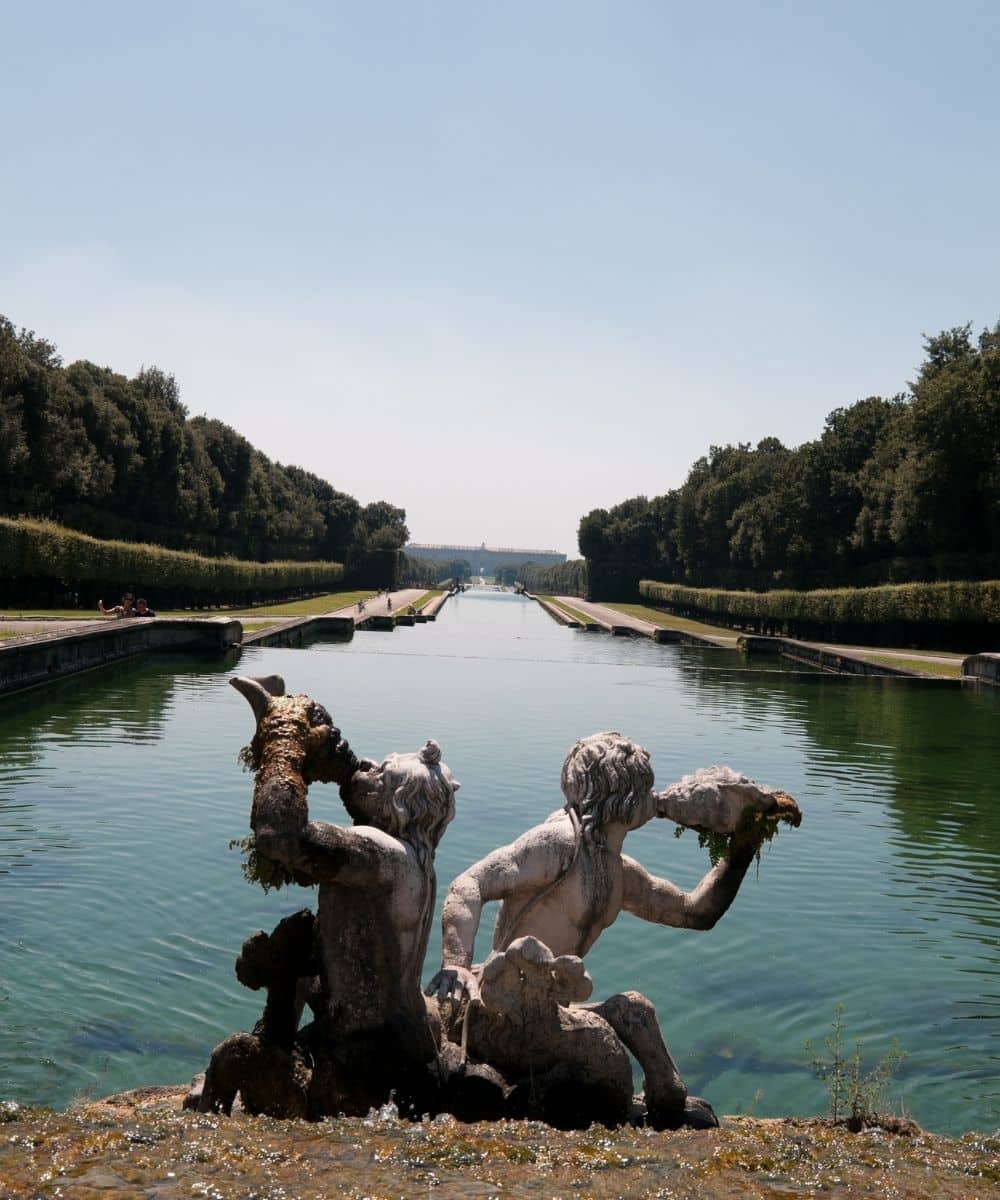
Why is it a UNESCO World Heritage Site?
From the official UNESCO site, you can learn the criteria for which the majestic work has earned a place in the coveted list of World Heritage. The following are some of them:
-The whole complex is a manifestation of the Enlightenment spirit, with its buildings of architectural value and perfect insertion in the natural landscape;
- The eighteenth-century complex consisting of the Caserta Royal Palace, its park, the Aqueduct and the Belvedere San Leucio is a remarkable testimony to the interchange of human values. The original project for an ambitious new city designates an innovative concept of urban planning;
- The site represents the symbol of a historical period of development of the region for the local community and, for this reason, it has got strong socio-functional integrity;
-The Aqueduct has preserved its original utility over time, serving the royal properties and surrounding areas;
-Despite the various restoration works that had become necessary over time, the entire complex still presents its original appearance in full respect of Luigi Vanvitelli's early projects. Therefore, the level of authenticity of all erect spaces remains high.
Want to know more about all the Unesco sites in Italy? Check out our guide to Unesco sites. You'll find lots of useful information about Unesco sites all over Italy.
About the author
Written on 05/07/2021


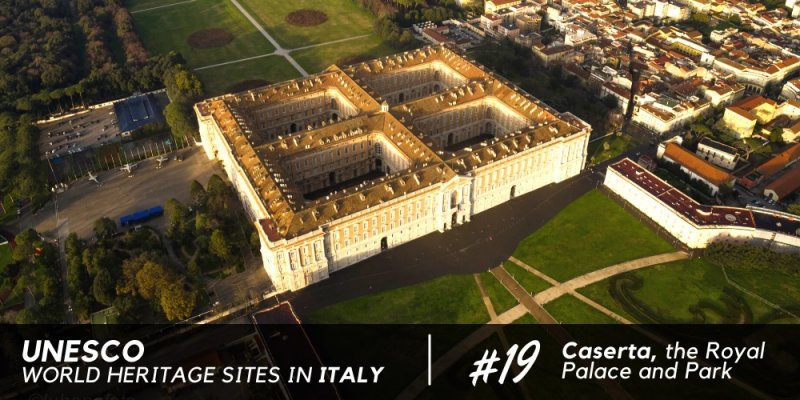

Sabrina Fabozzi
The Royal Palace of Caserta was the beating heart of the Kingdom of Naples, and it is now one of the must-visit places in Italy. Read our article to learn more about this UNESCO heritage!